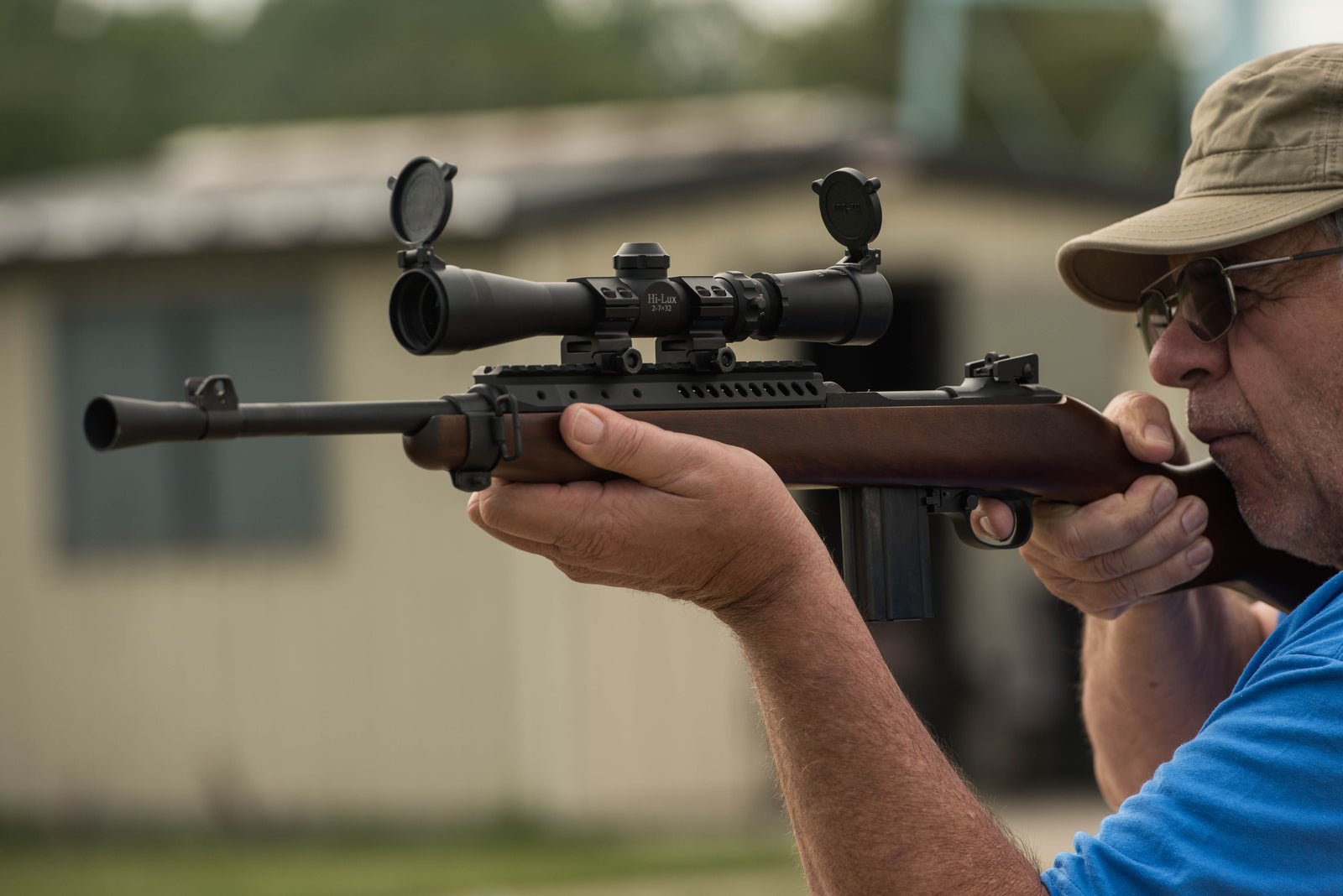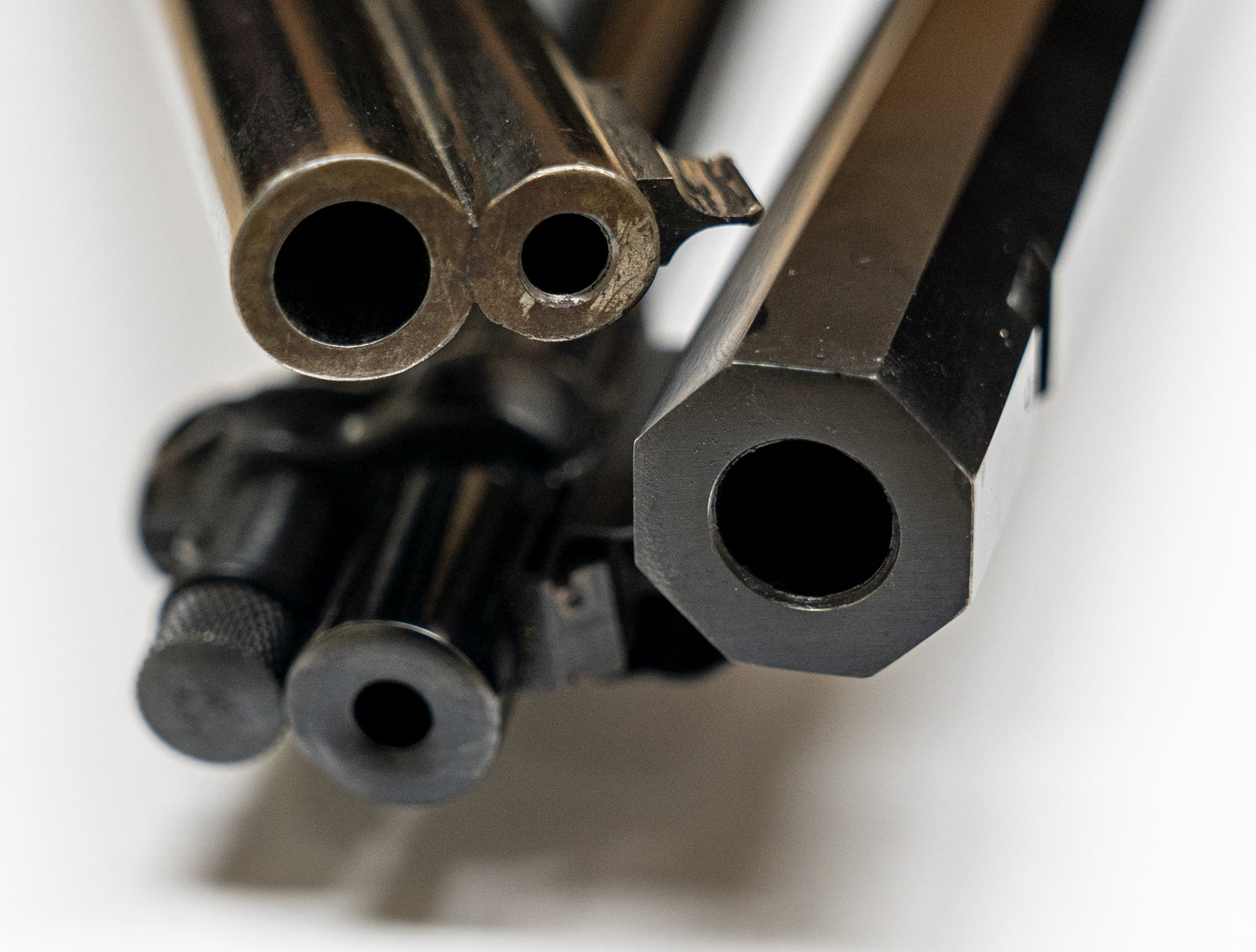Most bullets are made almost entirely of lead. Lead has been the top choice in bullets for hundreds of years now, and it’s all due to a few simple reasons - it’s very dense, it’s easy to cast, and it’s fairly malleable.

A mix of different lead bullets. The two on the right still have lines from the casting molds.
When a lead bullet is being formed, the lead melts at very low temperatures (just shy of 700F) that don’t require special furnaces. Once the molten lead is poured into a mold, the bullet maker has two options. For a soft cast lead bullet, more easily able to deform on impact, the lead is allowed to air-cool. For a hard cast bullet, the hot lead is dunked in water to cool rapidly. The strength of the lead becomes more important as the velocity in the barrel increases. Old muzzleloaders didn’t move bullets at the velocities we use today, so pure lead bullets weren’t a problem. However, at the friction and heat found above 2000 feet per second, pure lead becomes incredibly malleable.
As a bullet races down the barrel and heats up, it expands to fill in the grooves that make up the rifling. The better it fits these grooves, the better use it makes of the expanding gas that’s pushing it forward. This expansion to fill the grooves is known as obturation. A bullet that is made of a soft material will obturate more readily, but may also deform more easily. A harder bullet will retain its shape, but may not make perfect use of the gas pressure. Considering the importance of a bullet’s shape in regards to a stable flight plan, deformation inside the barrel poses a serious detriment to precision.
Unfortunately, lead can’t easily handle modern speeds and pressures in its pure state. Instead, some bullets might be alloyed with tin or antimony to increase their strength. If you’re firing rounds at around 1000 feet per second, pure lead is fine. I use cast lead bullets in my .45-70, which fires at 1328 feet per second.

A copper-jacketed bullet showing off its obturation. The markings from the rifling are still visible, even after the bullet slammed into the dirt.
The bullet may also be jacketed in a harder metal. The lead bullet wears a jacket like a body-tight coat. The most common jacket material is copper, but nickel and other alloy jackets certainly exist. If you’ve seen the movie “Full Metal Jacket,” this is what they’re referring to. Pvt. Gomer Pyle lists the caliber of the bullet in the same line as this detail: “seven-six-two millimeter, full metal jacket.” He is referring to a 7.62mm diameter bullet, mostly of lead but with a harder metal jacket surrounding it.
The largest long-range benefits of a full metal jacket (or even mostly-jacketed) bullet are: that less lead will rub away on the inside of the barrel, and that the bullet can be fired at a higher speed without deforming.
As a bullet speeds its way down the barrel, lead can easily rub away inside the barrel. Lead’s softness makes it easy to cast and shape, but also prone to rubbing away inside a barrel. These lead deposits will build up, reducing accuracy and increasing pressure. Copper jacketed rounds are essentially lubricated by the copper jacket, which does not rub away as easily. The barrel will have a longer accurate life between cleanings - you can fire more rounds before losing precision from fouling. As an added bonus, the hard jacket retains the bullet’s shape even at higher temperatures and pressures. With a jacket, lead bullets can be fired well above 2000 feet per second.

A semi-jacketed bullet on the right. On the left, the jacketing from another bullet, minus the lead. The jacket broke free from the lead upon striking a steel target. The strip of jacketing in the upper left still shows markings from the rifling of the barrel.
When the bullet eventually hits a target, FMJ (full metal jacket) bullets are more capable of a through and through impact. This is an impact that puts a hole all the way through a target, as opposed to stopping against a hard surface. Bullets without a jacket are more likely to expand (mushroom) upon hitting a hard surface, such as bone. The moment a bullet hits a hard surface and mushroom, it dumps all of its energy into the target. For hunting purposes, this is ideal.
Human inventiveness has gone a long way to create bullets that can be fired at high speed and pressure while retaining the ability to mushroom. When the propellant burns (see chapter 1.4), all the hot gas should be pressing against the back of the bullet. The bearing surface (the wall of the bullet that rubs against the barrel) will endure all of the friction and will undergo the most deformation. The tip merely needs to be the correct shape for its intended purpose. A semi-jacketed bullet is one in which the bearing surface is jacketed, and the tip is left bare lead. This allows the bullet to easily mushroom on impact, and resist deformation when fired at high speeds. A heavy bullet with a semi-jacket will deliver a massive amount of energy on impact, while being able to penetrate deeply.
For the most part, full metal jackets are commonplace in long range precision shooting. Precision shooting is focused on getting the bullet to the target in a repeatable manner. What the bullet does with the energy when it reaches the target is of much less concern. A copper jacket is formed with great precision, giving each bullet an even and uniform shape. To increase the precision yet further, jacketed rounds can be lightly machined to exacting tolerances. Lead is quite finicky to precision machine, so it is avoided as a surface material entirely.
Semi-jacketed, lead, or lead alloy bullets are common in hunting. Hunting distances are shorter, so the bullet has less time to deviate from its expected flight path. It’s more important that the bullet dumps its energy into the target. A nearly equal concern is placed on the speed and temperature the bullet will reach. Faster bullets will still likely get a semi-jacket. Slower bullets may be entirely lead, or alloyed to protect against higher speeds.
A bullet may contain a mix of other materials in and on it. One of the easiest to notice is when a bullet has a plastic tip. A plastic tip ( soft tip) isn’t meant to do much damage to a target on its own. Instead, it will easily get crushed up into the lead just behind it when impacting against a hard surface. If the plastic tip is wedged in a hollow cavity at the end of the bullet (a hollow point), the plastic tip can aid in mushrooming as it crushes backward. In flight, the tip isn’t hitting anything. If it’s formed into an aerodynamic point, it helps cut through the air. A plastic-tipped round will have a semi-jacketed bullet, combining the high ballistic potential of the overall shape with the jacket’s protection against deformation.
A rarer change to bullet materials lies in the core. Some bullets may be cast around a small chunk of harder metal. This incredibly hard core material delivers a very hard hit to whatever tries to stop it, making such a bullet ideal for armor piercing. For your own sake, don’t use armor piercing rounds at the range unless you own the target. Steel targets can be costly for the range to replace.

A mix of rounds with different bullet styles.
Another interesting bullet composition comes in the form of frangible bullets. Frangible bullets are composed of powdered metals (such as zinc, tin, and copper) that are compressed together at room temperature. When this bullet strikes a hard target, it disintegrates.
When you’re shooting steel targets at the range, a normal copper-jacketed lead bullet might ricochet off a steel target or a rock. It might alternatively fragment into a small number of large chunks. Frangible bullets are meant as an answer to these risks. The cold-welded bullet simply turns to powder.
Frangible bullets are less dense than lead. For two bullets of the same size, the frangible bullet will be the lighter one. To achieve a higher weight while staying in the same caliber, the frangible bullet will need to be built longer.





Leave a comment (all fields required)